
LiquidVR™ provides a Direct3D® 11 based interface for applications to get access to certain GPU features, regardless of whether a VR device is installed on a system.
Download the latest version - v1.0.3.20
This release adds the following features:
- Async Compute : Provides in D3D11 a subset of functionality similar to async-compute functionality in D3D12.
- Multi-GPU Affinity : Provides explicit multi-GPU control via ability to send D3D11 API calls to one or more GPUs via an affinity mask.
- Late-Latch : Provides ability to reduce input or tracking latency by reading constant data updated by the CPU after the original D3D11 calls.
- GPU-to-GPU Resource Copies : Provides ability to copy resources between GPUs with explicit control over synchronization.
Benefits
LiquidVR™ provides a Direct3D® 11 based interface for applications to get access to the following GPU features regardless of whether a VR device is installed on a system:
- TrueAudio Next: is a scalable AMD technology that enables full real-time dynamic physics-based audio acoustics rendering. Leveraging the powerful resources of AMD GPU Compute, it enables the truly immersive audio required to achieve full presence in VR.
- Asynchronous Shaders: Provides a subset of the async compute functionality native to Direct3D® 12 in Direct3D® 11. Helps to increase performance and decrease latency.
- Affinity Multi-GPU: Provides the ability to send Direct3D® 11 API calls to one or more GPUs set via an affinity mask.
- Latest Data Latch: Provides the ability to update data asynchronously from the CPU to reduce input or sensor latency.
- Direct-to-Display: Bypasses the operating system and sends the result of VR rendering straight to the headset for lower latency and better compatibility. This LiquidVR™ functionality is exposed in a special SDK targeted at headset vendors, and is not application-accessible.
- GPU-to-GPU Resource Copies: Provides ability to copy resources between GPUs with explicit control over synchronization.
- Motion Estimation: Calculates the motion estimation generated from two surface frames. Motion estimation works on specific GPUs and can be used for ASW.
- Vulkan® Interoperability: Provides conversion for buffers, surfaces and semaphores.
The LiquidVR™ run-time is automatically installed by the current AMD drivers. All that is needed for usage in an application is the LiquidVR.h header file, which is included in the LiquidVR™ SDK on GitHub. Download the White Paper to read a quick start guide which describes how to integrate LiquidVR™ into an application.
Requirements
- AMD Radeon™ GCN-based GPU (R9 390 or better recommended)
- Windows® 7 or newer
Related to LiquidVR™
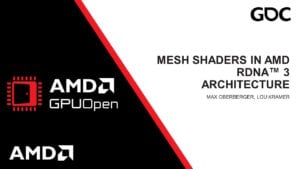
GDC 2024 – Mesh Shaders in AMD RDNA™ 3 Architecture – YouTube link
This talk describes the mesh shader pipeline and how it maps to the AMD RDNA™ 3 architecture.
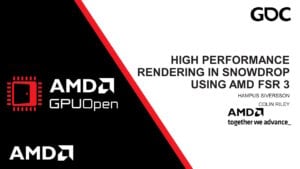
GDC 2024 – High Performance Rendering in Snowdrop using AMD FidelityFX™ Super Resolution 3 (FSR 3) – YouTube link
Learn about how AMD FSR 3 was integrated into the Snowdrop engine, which issues were faced and how the integration helped to improve FSR 3.

GDC 2024 – Game Optimization With The Radeon™ Developer Tool Suite – YouTube link
This session presents the latest enhancements in the RDTS, a rich set of GPU profilers and analyzers and a new GPU crash analysis tool.
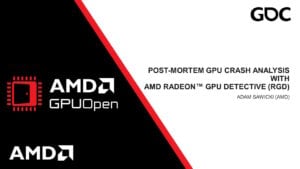
GDC 2024 – Post-mortem GPU crash analysis with AMD Radeon™ GPU Detective (RGD) – YouTube link
This session covers different types of failures – when they occur, why they are difficult to debug, and how RGD can help to identify a crash’s root cause.
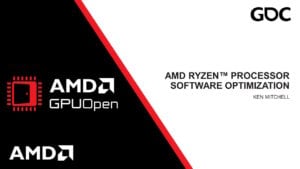
GDC 2024 – AMD Ryzen™ Processor Software Optimization – YouTube link
This talk focusses on the micro-architecture of modern AMD CPUs, followed by optimizations, frequent issues, and benchmarking best practices.
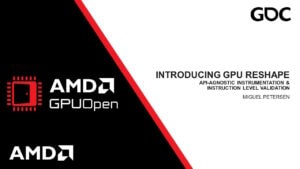
GDC 2024 – Shader Instrumentation with GPU Reshape – YouTube link
This talk presents GPU Reshape, a just-in-time instrumentation framework with instruction level validation of shader operations.
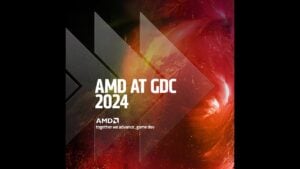
GDC 2024: We reveal incredible Work Graphs perf, AMD FSR 3.1, GI with Brixelizer, and so much more
Learn about our GDC 2024 activities, including AMD FSR 3.1, AMD FidelityFX Brixelizer, work graphs, mesh shaders, tools, CPU, and more.
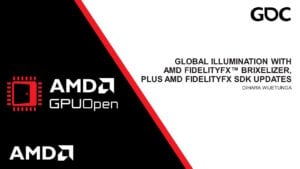
GDC 2024 – Global Illumination with AMD FidelityFX™ Brixelizer, plus AMD FidelityFX SDK updates – YouTube link
This talk briefly discusses how the AMD FidelityFX™ Brixelizer works, then explores how diffuse and specular global illumination is implemented with sparse distance fields in Brix GI.
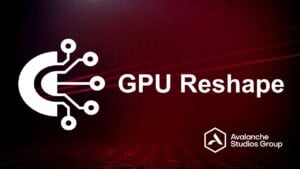
GPU Reshape
GPU Reshape is a powerful tool that leverages on-the-fly instrumentation of GPU operations with instruction level validation of potentially undefined behavior.

AMD FidelityFX™ Super Resolution 3 (FSR 3)
Discover frame generation with AMD FidelityFX™ Super Resolution 3, and get the source code and documentation!
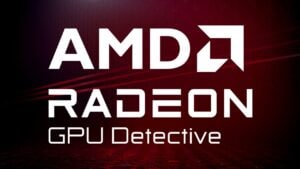
Radeon™ GPU Detective
Radeon™ GPU Detective (RGD) is a tool for post-mortem analysis of GPU crashes. RGD can capture AMD GPU crash dumps from DirectX® 12 apps.
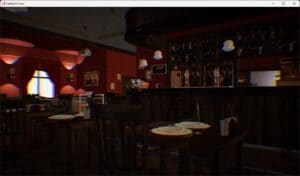
AMD FidelityFX™ Lens
AMD FidelityFX Lens is an AMD RDNA™ architecture optimized implementation of some of gaming’s most used post-processing effects.
Our other SDKs
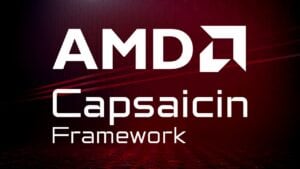
Capsaicin is a Direct3D12 framework for real-time graphics research which implements the GI-1.0 technique and a reference path-tracer.

The Render Pipeline Shaders (RPS) SDK provides a framework for graphics engines to use Render Graphs with explicit APIs.

ADLX is a modern library designed to access features and functionality of AMD systems such as Display, 3D graphics, Performance Monitoring, GPU Tuning, and more.
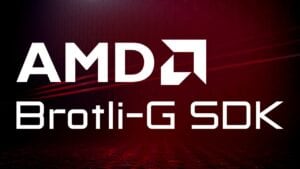
Brotli-G is an open-source compression/decompression standard for digital assets (based on Brotli) that is compatible with GPU hardware.
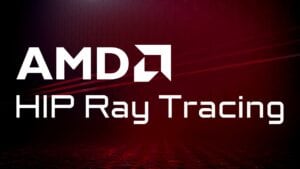
HIP RT is a ray tracing library for HIP, making it easy to write ray tracing applications in HIP.
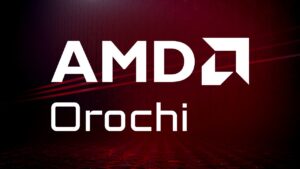
Orochi is a library which loads HIP and CUDA® APIs dynamically, allowing the user to switch APIs at runtime.
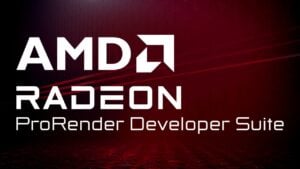
AMD Radeon™ ProRender is our fast, easy, and incredible physically-based rendering engine built on industry standards that enables accelerated rendering on virtually any GPU, any CPU, and any OS in over a dozen leading digital content creation and CAD applications.
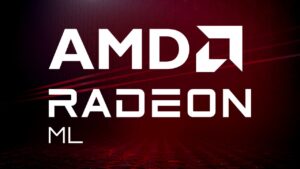
Radeon™ Machine Learning (Radeon™ ML or RML) is an AMD SDK for high-performance deep learning inference on GPUs.
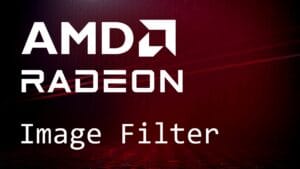
Harness the power of machine learning to enhance images with denoising, enabling your application to produce high quality images in a fraction of the time traditional denoising filters take.
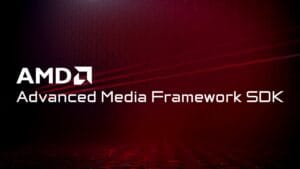
The Advanced Media Framework SDK provides developers with optimal access to AMD GPUs for multimedia processing.

The D3D12 Memory Allocator (D3D12MA) is a C++ library that provides a simple and easy-to-integrate API to help you allocate memory for DirectX®12 buffers and textures.
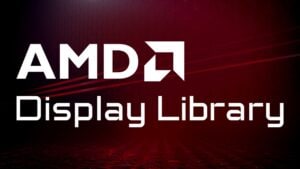
The AMD Display Library (ADL) SDK is designed to access display driver functionality for AMD Radeon™ and AMD FirePro™ graphics cards.



